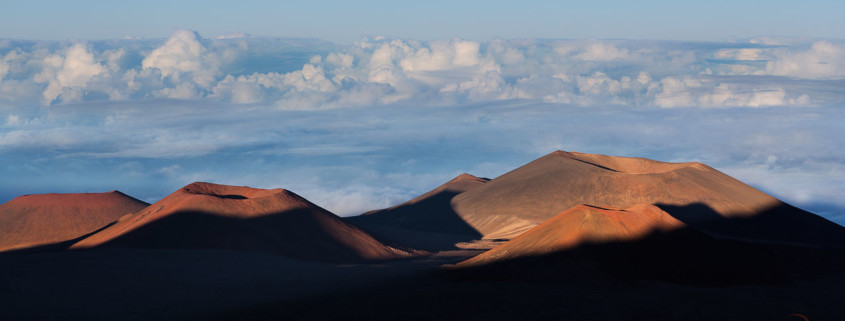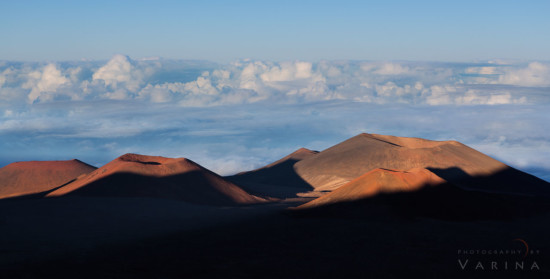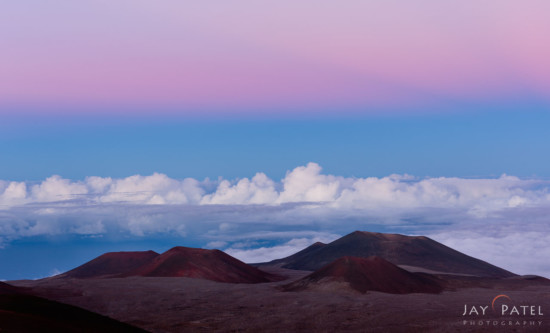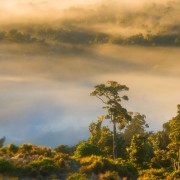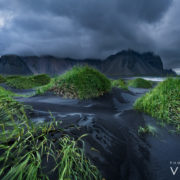Changing Light
The Big Island of Hawaii is an incredibly diverse place – vast black lava fields set against a backdrop of rich rain forest, brilliant flowers in every color of the rainbow beside waterfalls that crash into deep pools, black sand beaches frequented by ancient turtles, and white sand beaches decorated with swaying palms. We drove up to Mauna Kea to see yet another face of the island. The summit of this gorgeous volcano is at 13,796 feet (4,205 meters). We were at sea level in Hilo, so the quick change in altitude left us feeling a bit short of breath. The air is noticeably thinner at that altitude.
We arrived as the sun was getting low in the sky. The volcanic craters were beautiful in the fading light – but there’s more to this place than a single photo can show. Just as one spot on the island is so different from the next – changing light makes a single location entirely different from one moment to the next as well.
Case in point… Jay took this shot of the craters a bit later in the evening. The sun had dipped below the horizon, and the sky was painted in soft color. My photograph highlights the craters themselves. Jay’s photo is about the glowing sky.
When you’re out shooting, pay attention to the changing light. The golden hour is ideal for capturing depth and texture in your landscape. The deep shadows and soft, directional light in my photo bring out details in the craters that are difficult to see in Jay’s shot. Sunset colors – on the other hand – compliment the uneven terrain, and create a beautiful backdrop for an unusual location.

